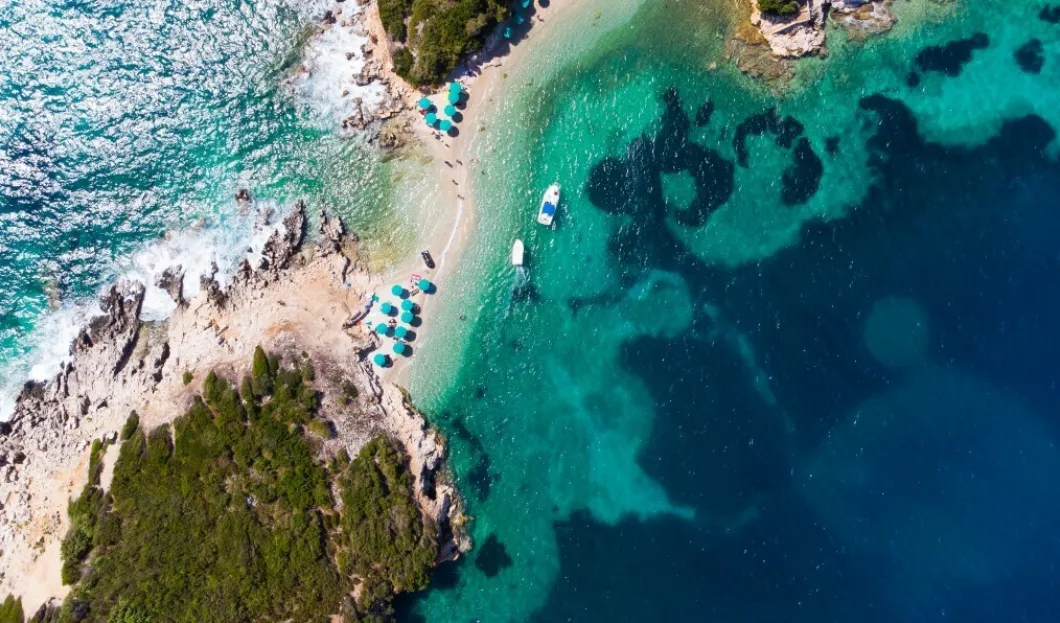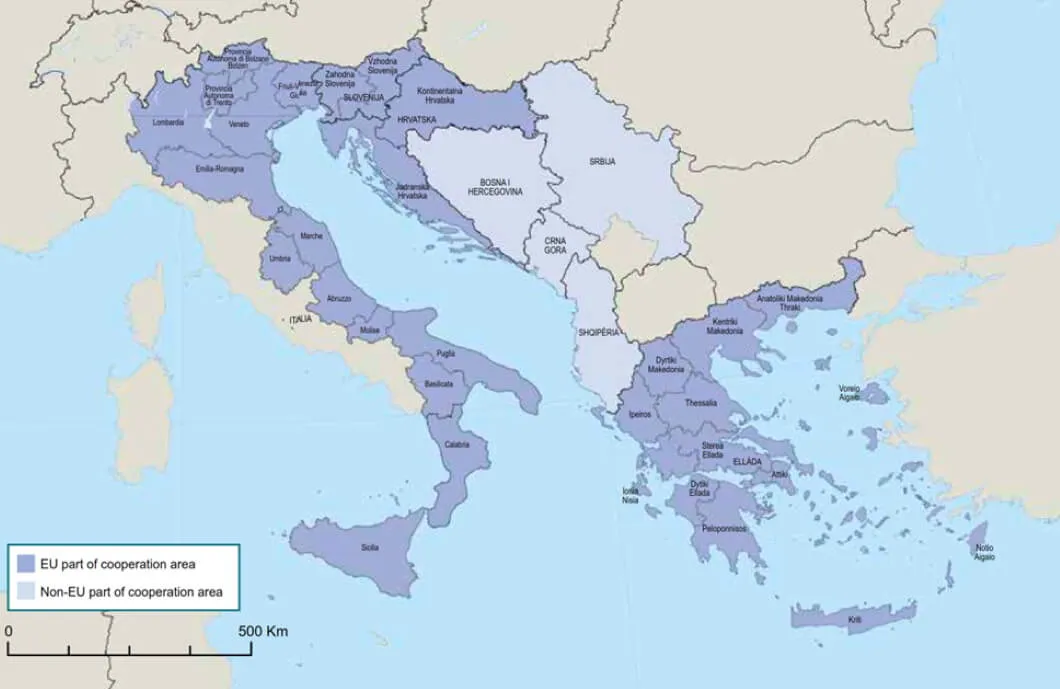
CREATURES (Promoting Creative Tourism through new Experiential and Sustainable routes) is a viable project to preserve cultural heritage and promote sustainable and experiential tourism in the ADRION (Adriatic-Ionian Region).
The general frame of reference is the ADRION project, one of the dominant programs of the EU overseeing the region. The Adriatic-Ionian region is already one of the most attractive tourist destinations in the world, yet it can still grow in cultural tourism.
The CREATURES project will be exploiting Cultural & Creative Industries (CCI) potential, finding the right balance between innovation and conservation of the Adrion-rich natural and cultural heritage.
The project will generate positive changes in the ADRION Region at three levels: economic (increased CCI SMEs-startups’ competitiveness and tourist flows attracted by the CreaTourES routes offered); cultural (greater valorisation of cultural heritage); strategic (improved policies promoting a more integrated vision of CCI).

Sustainability is a crucial element in every step of the project.
The following partners will be working side by side:
- Metropolitan City of Bologna (Lead Partner)
- Friuli Venezia Giulia Autonomous Region
- Patras Science Park S.A
- Regional Development Agency Dubrovnik-Neretva County – Dunea
- School of Economics and Business in Sarajevo, University of Sarajevo
- The Regional Directorate of National Culture, Vlorë
- Urban Planning Institute of the Republic of Slovenia
- Athens University of Economics and Business Research Center
The Context
The real challenge - and the main opportunity - of the project is the diversity of the eight countries involved, all belonging to the same Adriatic-Ionian region yet very different: four are EU Member states (Croatia, Greece, Italy, and Slovenia), three are candidate countries (Albania, Montenegro, Serbia) and one is a potential candidate country (Bosnia and Herzegovina). In addition, many sub-regions, cultures and languages further complicate the picture. Therefore it may be not easy to adopt a one-size-fits-all approach.
Secondly, the region contains different economic situations. For instance, it is home to some highly competitive areas, which are global leaders in research and development and have excellent research facilities and systems of product quality certification. But on the other, it also has some territories with poor economic performance, limited research capacities, and low manufacturing productivity. Moreover, the transport links among the Partner States and the transport connections between coastal and inland areas suffer from imbalances on the two coasts of the seas.
In the past, the above challenges had led to a lack of coordination and cooperation between the countries and regions affected. Therefore Adrion Interreg has been acting as a policy driver while fostering integration between Partner states for the benefit of more than seventy million people in the Adriatic and Ionian regions.
Theoretical Framework
The CREATURES project will primarily develop actions and tools to raise competencies, support decision-making processes, and test the three distinct proposed policies.
- Policy Recommendations (more details below), Local Action Plans and related Pilot Activities will provide decision-makers with new strategic tools to better support CCIs in the project fields.
- The Joint Acceleration Programme is expected to increase CCI-related SMEs and start-ups’ capacities through EU programmes and funding (for both EU and non-EU member states), creation of strong ties with other sectors (Cultural heritage, tourism, education, commerce, etc.), trans-local cooperation, mobility between PPs’ (Project Partner) countries of CCIs policymakers and practitioners etc.
- Mobile apps and multimedia installations will attract tourists (especially young people) to the new CreaTourES routes and encourage them to explore ADRION’s cultural heritage in an ‘alternative’ way.
Aims & Objectives
The project will generate positive changes in the ADRION Region at economic, cultural, and strategic levels.
Economic
The project is set to improve the tourist flows by increasing CCI SMEs-startups’ competitiveness, designing a mobile app, “CreaTourEs”, and many eye-catchy multimedia installations across the region.
Cultural
Adrion-Ionian region is blessed with multiple and rich cultural heritage. Cultural-oriented tourism brings people together from different backgrounds, cultures, and traditions, fostering the economic growth of the host community. CREATURES will further enhance the distinct quality of the region by transforming it into a more open and sustainable tourism centre.
Strategic
The context of the Adriatic region shows several weak points where the action is needed.
- An absence of a coherent policy framework for CCIs.
- Scattered legal framework for CCIs
- Lack of financial support for CCIs, SMEs and start-ups.
- Lack of recognition of CCIs as a coherent and autonomous field.
- The absence of cultural and creative industries presence in public discourse.
- Predominant presence of CCIs in the urban surrounding only.
- Insufficient partnership and synergies with other sectors.
CREATURES: The Policy
To overcome these difficulties, a particular policy was developed. The central challenge is to propose a set of PRs that are transversally applicable, relational and adequate to divergent realities, capacities, resources, etc.
The premise: the general policy governing the operations of CCIs in the region is weak. Even for those who have, the framework is too ambiguous, and their existing policies are implemented only top-down, especially in our PP countries.
The current approach in the EU and non-EU-partnered countries hinders bottom-up aspiration, need, level of development, and planning attuned to the local capacities. Moreover, some countries in this region don’t even have a clear and coherent definition of CCIs.
The new policy recommended assumed that a policy definition and practice for CCIs must encompass all of the profile and status of the CCIs under one umbrella policy. The implication is that CCIs must be established in all PP countries with full recognition. And this policy would only function if it’s updated and continuously monitored through close involvement of the community of practice.
The CREATURES policy is set to enhance PP country’s ADMIN, CCIs, Research & Innovation, and Human resources. Furthermore, it’ll alleviate CCIs barriers, strengthen enablers, integrate with existing good policies, twerk transnational character, and expose the possible conflict between PRS or between PRS and other existing policies.
The new policy operates with the following objectives.
- Open a broad participatory and all-inclusive process of setting the agenda and policy formulation across all interested and invested actors and sectors.
- Create a specific policy framework for CCIs integrating all aspects of CCIs’ profiles, status and scope of activity.
- Foster entrepreneurial culture and dynamics through enabling concrete incentives for start-ups and SMEs.
- Establish and develop better legal stipulations and institutional support for all CCIs actors, especially for individual artists, artisans, and civil actors.
- Secure mode stable working conditions for CCIs.
- Promote cultural diversity and gender equality and ensure access.
- Reinvent operating models of CCIs to reduce their environmental impact (e.g. film shootings, touring performances, production).
- Open access to creative work through digital technologies and new approaches to the audience and cultural participation.
- Change funding opportunities and business models for CCIs.
- Increase the growth of CCIs production.
- Secure CCIs’ contribution to democracy and freedom of expression.
- Enable higher levels of equality and resilience in the CCI sector.
The contribution of the CCIs sector has been deeply measured throughout the last three decades to justify public support and investments in the arts, culture and creative sectors. However, it’s not easy to prove the declared economic benefits of the CCIs. Moreover, the economic impact studies do not indicate that the multiplier effect is more significant in the arts, culture and creative sectors than in other sectors of the economy.
However, this situation in no way diminishes the importance of CCIs in the economy, nor should it weaken the motivation for action. On the contrary, it urges all stakeholders and participants to research further the means to accurately estimate the impact of CCI in various socio-political, cultural and economic contexts. CCIs can significantly modernise cultural heritage, especially revitalisation, reconstruction, presentation, interpretation, etc.
The CREATURES project devised indicators for the CCIs’ impact assessment on cultural heritage and tourism. The proposed indicators introduce CCIs as one of the drivers for heritage sustainability and are based on the methodology used by the Cultural and Creative Cities Monitor. Indicators for cultural/creative industries’ impact assessment on cultural heritage are proposed on policy and project levels. At the policy level, they potentially serve decision-makers against which policy interventions can be measured and adequately adapted. On the project level, they serve cultural heritage managers in their daily operations, potentially leading to the successful management of their cultural heritage sites.










